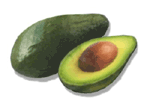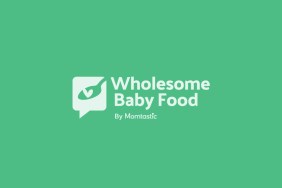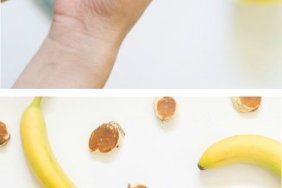Did you know that your baby does not have to eat rice cereal as a first food?
Baby’s first taste of solid food should be a single ingredient, age appropriate food. A few wonderful choices for first foods for babies, as many pediatric resources are now acknowledging, are tasty and creamy avocados, bananas and sweet potatoes. These healthy and nutritious foods make really great first foods for baby because they are easy to digest and full of vitamins, minerals, fats and other nutrients a growing baby needs..
This page is full of recipes for fresh homemade first foods for baby and are idea first food recipes to introduce to your baby between the ages of (4) and 6 months old. Many parents still begin to introduce solid foods (complimentary or weaning foods) to their babies prior to the age of 6 months olds. These recipes acknowledge and accommodate this fact. Ideally, babies should have nothing but breast milk and/or formula during the first 6 months of life.
Read more about baby being ready for solids and view our list of resources that advocate delaying solid foods.
Nutritious and Tasty & Wholesome Baby Food for First Food Feedings
Avocado – a great first food for baby, avocados burst with essential fats and nutrients that a growing baby needs. Smooth and creamy, avocados are easily digested and well tolerated by most babies!
Vitamins: A, C, Niacin, Folate
Minerals: Potassium, Phosphorus, Iron, Magnesium, Calcium
Step 1: Peel and take out the pit of a ripe avocado – do not cook
Step 2:Cut “meat” out and mash with a fork
Step 3:There should be no need to use a machine as just like bananas, avocados have a very soft consistency and texture. Avocados do not need to be cooked
Step 4:Add formula/breast milk or water to thin or add cereal (if desired) to thicken up. Learn More about Avocado
Bananas – bananas are another great first food for your baby. Research indicates that bananas and their mucosal properties actually help coat the tummy and help aid in digestion. Bananas are sweet, which may help baby more readily accept the first food experience. Learn more about bananas and if it’s true that sweet fruits and veggies should not be introduced first.
Vitamins: A, C, Folate
Minerals: Potassium, Phosphorus, Selenium, Magnesium, Calcium
Step 1: Peel a ripe banana – do not cook
Step 2: Place banana in a food processor/food mill or blender and puree
Step 3: You can also mash the banana in a bowl using a regular fork – heat in microwave for 25 seconds prior to mashing for extra softness
Step 4: Add formula/breast milk or water to thin or add cereal (if desired) to thicken up.
Organic Brown Rice Cereal – Did you know that baby’s first food does not have to be a commercial infant rice cereal? Many pediatric resources are acknowledging the fact that avocado, banana and sweet potato make great first foods for baby.
If you decide to make homemade baby cereal, make it with brown rice (organic if preferred). Whole grains are more healthy and nutritious for your baby (and for the whole family). Learn more about whole grains. You may also be interested in reading our Cereal FAQ explaining what types of grains to use, how long they may be stored and more.
- 1/4 c. rice powder (organic brown rice ground in blender or food processor)
- 1 cup water
Step 1: Bring liquid to boil in saucepan.
Step 2: Add the rice powder while stirring constantly.
Step 3: Simmer for 10 minutes, whisking constantly, mix in formula or breast milk and fruits if desired
Serve warm.
Pears
Vitamins: A, C, Folate
Minerals: Potassium, Phosphorus, Magnesium, Calcium
Step 1: Peel and cut into chunks so as to avoid the little seed portion.
Step 2: Steam gently until tender;
Step 3: Place in a blender/food processor and puree until smooth. You may be able to just use a fork too.
Step 4: Use the leftover cooking water if needed but Pears tend to be very runny and watery without adding liquid – Add some baby cereal to thicken if needed.
Acorn or Butternut Squash (winter)
(nutrient info for squash of all types may be found at our “Tips on Squash“ page)
Step 1: Cut acorn, hubbard, or butternut squash in half, scoop out seeds
Step 2: Place an inch of water in a baking pan, then place squash halves “face” down in the pan. Check on water level while baking
Step 3: Bake in a 400 degree oven for 40 minutes or until the “shell/skin” puckers and halves feel soft then scoop squash “meat” out of the shell
Step 4: Place squash “meat” into your choice of appliance for pureeing and begin pureeing.
Step 5: Add water as necessary to achieve a smooth, thin consistency.
Step 6: You can also peel the squash, scoop out the seeds and then cut into chunks and boil/steam until tender (like when boiling potatoes for mashed potatoes)
Step 7: Follow steps 4 and 5
Yams/Sweet Potato
Vitamins: A (24,877 mg ), C, Folate
Minerals: Potassium, Sodium, Selenium, Phosphorous, Magnesium, Calcium
Step 1: Wash and poke holes in sweet potato with fork then wrap sweet potatoes in tin foil – do not peel for baking/microwaving. (you can also do this in the microwave – only use plastic wrap and cook for 8 minutes on high or until tender)
Step 2: Place in a 400 degree oven and bake for 30 minutes or until soft.
OR
Step 3: Peel sweet potatoes and cut into small chunks
Step 4: Place chunks into a pan with just enough water to slightly cover potato
Step 5: “Steam” boil until tender, be sure to check on the water level.
Step 6: Reserve any left over water to use for thinning out the sweet potatoes
Step 7: If you have baked your sweet potato, remove skins and use liquid from your preferred source
Step 8: Place sweet potato into your choice of appliance for pureeing and begin pureeing.
Step 9: Add the reserved water or other liquid as necessary to achieve a smooth, thin consistency minutes or until a knife inserted near center comes out clean.
Learn why a Yam really is NOT a Yam and other information about serving Sweet Potatoes to your Baby
More First Foods & Homemade Baby Food Recipes
Mango (6-8 months – sometimes over 8 months – learn more about Mango)
Vitamins: A (1262 IU in one cup.), C, E, K, Folate
Minerals: Potassium, Phosphorus, Magnesium, Calcium, Sodium
- 1 Ripe Mango
Step 1: Peel, Deseed and mash Mango until smooth
Step 2: Add formula/breast milk or water to thin or add cereal (if desired) to thicken up.
Apples (Applesauce)
Vitamins: A, C, Folate
Minerals: Potassium, Magnesium, Calcium
This recipe is written so that you may use any amount of apples you wish.
Step 1: Peel, core and cut apple into slices/chunks
Step 2: Place slices or chunks into a pan with just enough water to slightly cover apples
Step 3: Boil/steam until tender; be sure to check on the water level and stir.
Step 4: Apples may be mashed with a potato masher to achieve a smooth applesauce consistency. If your masher will not achieve a puree type of consistency, then follow steps 5 – 7
Step 5: Reserve any left over water to use for thinning out the apples
Step 6: Place into your choice of appliance for pureeing and begin pureeing.
Step 7: Add the reserved water as necessary to achieve a smooth, thin puree
Step 8: Add cereal (if desired) to thicken up the
Step 9: Ask your pediatrician about adding some cinnamon for new tastes.
![]() HINT. You may also buy an “Adult” jar of Natural applesauce from your local grocers. Make sure you buy Natural Applesauce however. Read the labels if you are unsure. The only ingredients should be apples and water or just apples. A few companies may add ascorbic acid (vitamin C) or citric acid to their Natural Applesauce; this is fine.
HINT. You may also buy an “Adult” jar of Natural applesauce from your local grocers. Make sure you buy Natural Applesauce however. Read the labels if you are unsure. The only ingredients should be apples and water or just apples. A few companies may add ascorbic acid (vitamin C) or citric acid to their Natural Applesauce; this is fine.
Why do you suggest peeling fruits and veggies; Nutrients are found in the peels right?
![]()
![]() Salt and sugar are not needed when making baby food. Omit these items, preferably at ALL times, in your baby’s meals. Other spices such as cinnamon, garlic powder, pepper etc. may be introduced as early as 7 months with your pediatricians consult.
Salt and sugar are not needed when making baby food. Omit these items, preferably at ALL times, in your baby’s meals. Other spices such as cinnamon, garlic powder, pepper etc. may be introduced as early as 7 months with your pediatricians consult.
![]() Remember, always consult with your pediatrician regarding introducing solid foods to your baby and specifically discuss any foods that may pose allergy risks for your baby.
Remember, always consult with your pediatrician regarding introducing solid foods to your baby and specifically discuss any foods that may pose allergy risks for your baby.
More Baby Solid Food and Baby Food Recipe Topics:
Solid Food Stages & Feeding First Solids Month Range of Feeding Stages & Tips for Feeding First Solid Foods
Introducing Solid Foods by Age Chart for information about what food to avoid and what foods are appropriate for certain ages.
How Much Food Should Your Baby Eat? Not as much as you may be thinking. Read our article and ease your mind.



